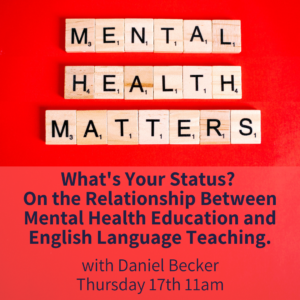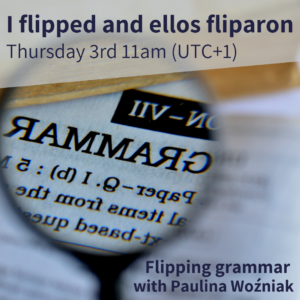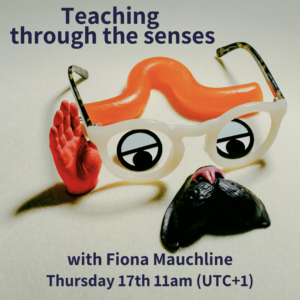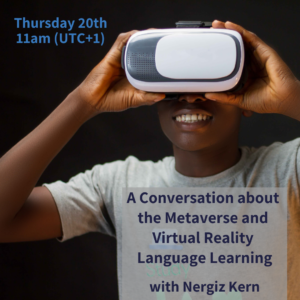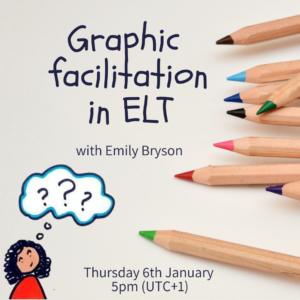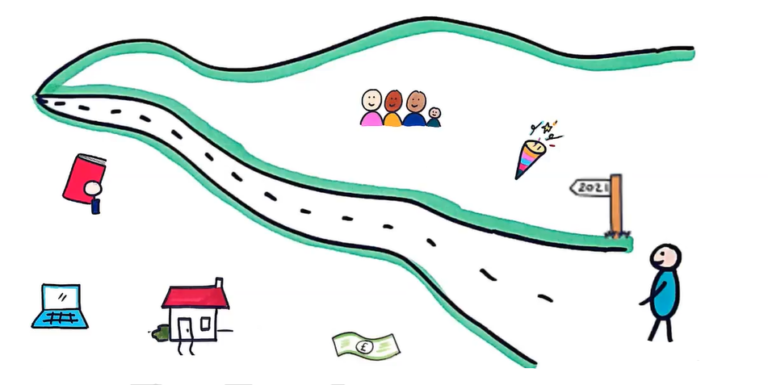First of all, apologies if you can’t watch the video – there are some clips of a web series and other adaptations of Pride and Prejudice. This was Romina’s second webinar in the Hub and you can catch up on her first session, Stories to Transform Challenging Behaviour, which had ideas around how you could use storybooks to work with behavioural problems in the young learner classroom. In this session though, she was looking at working with older learners on a transmedia project.
To begin, Romina talked about how storytelling has evolved over the years, from oral expression, graphic storytelling, written narratives to screens and shared a wonderful idea of a museum of storytelling from Carlos A. Scolari. She then gave a definition of a transmedia story:
“one that is told across multiple media and platforms, but some of the receivers do not limit themselves to consuming cultural products, but take up the task of adding new texts to the story.”
Transmedia tells that the content of a story can be found in other media: a series, a game, a toy, a podcast, and so on. For example, in the Star Wars franchise, there are films, TV series, fan fiction and fa films, comics, books, video games, toys and tabletop games.
Romina went on to talk about the reasons for using multiple media: each different channel or format will reach our students in a different way. Many of our teenage learners spend a lot of time online and see stories through their social media so Romina wondered how we could include this digital practice in the literature classroom. As Carlos A. Scolari highlights, there is a “digital dissonance” between the ways teens use media outside school and the structured ways they use it inside classroom settings.
We then watched the introductory line of Pride and Prejudice from a YouTube series which retells the story in the 21st century, The Lizzie Bennet Diaries. The character of Lizzie Bennet is making a video in her bedroom and this in itself creates a more relatable setting for our teenage learners. The series itself has evolved into other formats: as well as 100 episodes on YouTube, there are two books and various social media accounts. As Robert Pratten highlighted in 2011, “In transmedia storytelling, engagment with each successive media heightens the audience’s understanding, enjoyment and affection for the story.” Through social media, consumers can also interact with other consumers, posting comments, asking questions and sharing ideas.
Romina played an audio recording from one of her students explaining what she had gained through engaging with the content of the story in different ways and went on to talk about how the topos, mythos and ethos of the content are shared across different media. The mythos relates to the struggles the characters encounter in a story. The topos is the setting on the story – which may change without affecting the core storyline. The ethos is the code of behaviour that characters and society follow. Analysing the final episode of the web series, Romina pointed out how the mythos had been adapted by the writers to maintain the core principles of the original story (an independent woman looking to find her own place in society) in an updated setting.
Romina then suggested how we could incorporate different strategies and Bloom’s Taxonomy through using transmedia projects: learning by doing, problem-solving, simulating, evaluating, creating and more. Before watching one of the videos her students had created, Romina shared some useful questions for students to consider when creating their own content: Who is the audience? How can I organise the information? What communication strategies will I use?
She also shared some questions learners could answer when consuming content, such as:
- Do you idenitfy with any of the characters?
- Can you imagine a particular scene in a different context?
- Would you write any part of the story in a completely different way?
- How could the story be adapted to another format: play, videogame, comic?
To finish, Romina shared some examples of projects her learners had created through genially, which allows you to create interactive images, and Canva, which allows for a more structured presentation.
We ended with a clip from a video with Henry Jenkins about storytelling and how the public have more input in media. The owner of the story has changed as consumers become prosumers (combining produce and consume) and the audience add their own ideas to expand the stories they encounter.
Romina ended by saying that her students had been highly motivated through the projects and found them an appealling way of engaging with classic literature.

